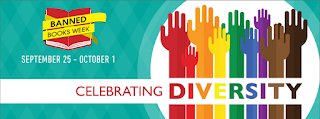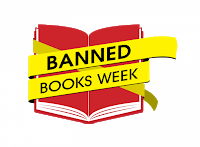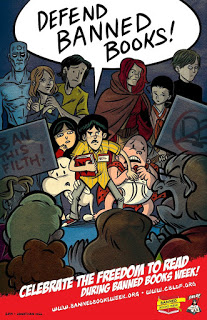 |
| Image by Banned Books Week Coalition |
Banned Books Week has rolled around again, and unfortunately we still have the need to support it.
Why is there a Banned Books Week?
Banned Books Week started in the USA in 1982, a response to the number of school, libraries and bookstores banning certain books.
 |
| The official logo for Banned Books Week |
Frequently books are banned, both in the USA and here for the diverse content contained challenging perceptions of difference. Most often this means books about people and issues in relation to: gender, sexual preferences, people of colour, gender diversity, people with disabilities, and ethnic, cultural, and religious minorities, in other words books that give diverse perspectives on what it is “to be”.
Banned Books Week is about recognising that we are capable of recognising for ourselves what is suitable to read, and giving everyone the freedom to read
The top ten most challenged classic books
(compiled by ALA 2016)
Links to library copies are given below, many are also available in other formats (audio book, DVD, eBook)
- The Great Gatsby, by F. Scott Fitzgerald
- The Catcher in the Rye, by J.D. Salinger
- The Grapes of Wrath, by John Steinbeck
- To Kill a Mockingbird, by Harper Lee
- The Color Purple, by Alice Walker
- Ulysses, by James Joyce
- Beloved, by Toni Morrison
- The Lord of the Flies, by William Golding
- 1984, by George Orwell
- Lolita, by Vladimir Nabokov
Some of the reasons given for challenging books:
Discover more from Charles Sturt University Library Blog
Subscribe to get the latest posts sent to your email.
